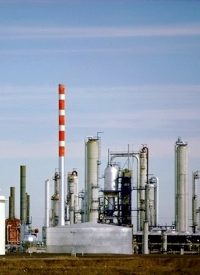
With the national average price of gasoline hitting the highest level in history for this time of the year, the impact of that increase reaches far beyond the pocketbook of the average worker driving off to work in the morning. For every 25-cent increase in the price of gas (which has increased almost 70 cents per gallon in the last year, and by nearly 30 cents in just the last month), consumers are forced to spend an extra $3 billion that they weren’t expecting.
And it’s showing up in changing spending patterns. Jay Ricker owns 53 convenience stores in Indiana which also sell gasoline. He’s lucky to break even on the sale of gas as the margins are so tight, but sells gas to generate traffic for the other items his customers want, which is where he makes his money: cappuccinos, candy bars, soda, water, and donuts. Ricker says: “I hate these high prices. People don’t want to come in and buy something I make money off.”
Bryon Gongaware owns a florist shop in White Bear Lake, Minnesota and has seen his delivery costs jump significantly. But he has decided to eat the increase rather than raise his prices: “I don’t think the economy is strong enough that you can be careless about raising prices,” and so his increased costs are coming “right out of the bottom line. ”
It’s not just gasoline. The average consumer in the Northeast this winter will, according to the Energy Information Administration, be forced to spend $2,431 on heating oil, an increase of 23.8 percent in just one year. Airlines are moving to increase their fares, and small businesses from chemical makers to truckers are feeling the pinch.
Robert Wagner, a high school teacher in Thornton, Colorado, drives a Chevrolet Suburban, and says he is “very, very frugal right now. ” He puts in just enough gas to get him to his next pay day.
Kathleen Madigan, writing for the Wall Street Journal, calculates that every $10 rise in the price of oil subtracts one-half percent from the GDP, which potentially costs 500,000 fewer new jobs over the next twelve months. And this is where the “ripple” effect kicks in. Without those new jobs, new households aren’t forming, which is impacting homebuilders. Even though the sales of existing homes rose in January (many of them foreclosures, and contracts signed before the rapid run-up in oil and gas prices), the sales of new homes fell by an astonishing 12.6 percent in just one month.
And the expected positive economic impact of the reduction in Social Security taxes from 6 percent to 4 percent under the administration’s last-minute congressional compromise has simply disappeared altogether. The Commerce Department expected consumer spending to increase by a healthy 0.4 percent in January. Numbers just released showed actual spending was half that, and when gasoline and other energy costs are backed out, consumer spending actually dropped for the month. And those numbers of course are backward-looking.
The uncertainty stemming from uprisings in Libya (despite that unhappy country’s relatively modest contribution to total oil production) have led many to wonder if disruptions in supply from some of the major producers such as Saudi Arabia aren’t also on the horizon. And so people are saving more, with the national saving rate jumping from 5.4 percent in December to 5.8 percent in January.
There is at least one more wild card in play here. Wholesale commodity prices have jumped recently which are just now beginning to show up at the consumer level — coffee and orange juice being the most obvious — which eventually is going to cause consumers to start to build their own pantries in advance of further price increases. This change in behavior, from saving to spending to hoarding, could ultimately lead to the much-anticipated increase in the velocity of money — a signal to economists and other observers that the run to higher and then much higher prices has begun.
As Henry Hazlitt pointed out in 2004 in his “Inflation in One Page” explanation:
Inflation is an increase in the quantity of money and credit. Its chief consequence is soaring prices. Therefore, [price] inflation is caused solely by printing more money. For this the government’s monetary policies are entirely responsible.
Students of current economic affairs are best served by remembering that, in a free economy, a rise in the price of one commodity may be normal, due to limited, localized and specific circumstances. But a general and rising level for most commodities signals a much different malaise: a general cheapening of the paper currency by the central bank. As University of Chicago Economics Professor Milton Friedman penned in his “Counter-Revolution in Monetary Theory,”
Inflation is always and everywhere a monetary phenomenon in the sense that it is and can be produced only by a more rapid increase in the quantity of money than in output.



